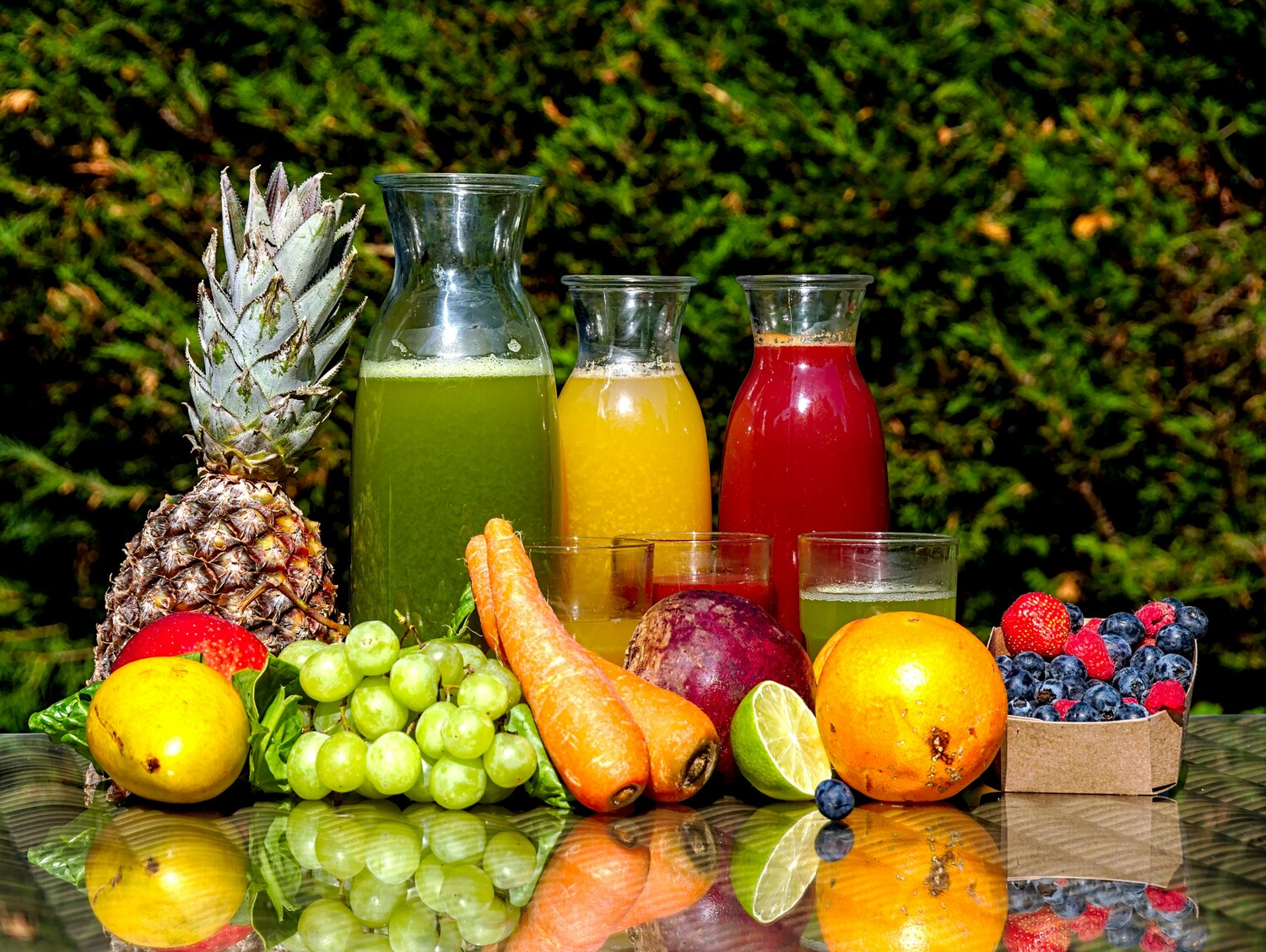When you grab a jug of “fresh-squeezed” juice from your favorite big-box grocery store, you’re probably picturing hand-pressed oranges, vibrant nutrients, and a burst of clean, healthy flavor. But what if the juice in your cart has more in common with shelf-stable soda than the real fruit it claims to come from?
While juice labels often tout terms like “natural,” “cold-pressed,” and “not from concentrate,” many of these bottles hide behind clever marketing, legal loopholes, and long processing chains. The result? A product that may look healthy but is often a chemical cocktail with questionable freshness.
Here are the five most stomach-churning surprises lurking in grocery store “fresh” juice jugs and what to look for if you actually want the real deal.
1. “Natural Flavors” That Aren’t Natural At All
When you see “100% juice” or “all-natural flavoring” on the label, it’s easy to assume that what you’re drinking is straight from the fruit. But in many store-bought juices, that “natural flavor” may be anything but.
Big juice manufacturers often strip the juice of flavor during processing, especially if the juice is stored in oxygen-deprived vats for months (yes, months). To bring the taste back before bottling, they use flavor packs, which are chemically engineered and custom-designed to mimic the original fruit’s profile.
These flavor packs are technically derived from the same fruit, but the process removes the natural complexity and replaces it with lab-created consistency. Worse, the FDA doesn’t require companies to list these packs as anything other than “natural flavoring” despite their heavy processing.
You’re not drinking orange juice. You’re drinking engineered orange-esque liquid. And legally, companies don’t have to tell you which chemicals were used to create that “natural” taste.
2. Hidden Additives Like Enzymes, Preservatives, and Fillers
Even when a label says “no added sugar,” that doesn’t mean your juice is free from extra ingredients. Big-box brands often use preservatives, clarifying agents, enzymes, and stabilizers to improve texture, extend shelf life, and keep the juice from separating or spoiling on the shelf.
Some common additives found in “fresh” juice include:
-
Sodium benzoate – a preservative that, in the presence of Vitamin C, can form benzene, a known carcinogen
-
Carboxymethyl cellulose (CMC) – a thickener used to give juice a rich mouthfeel, but which has been linked to gut irritation
-
Amylase and pectinase – enzymes that help break down fruit solids, often used during mass production to clarify juice
-
Colorants and “cloudifiers” – used to make the juice look freshly squeezed even after months in storage
Manufacturers aren’t required to disclose all processing aids, especially if they’re not considered “active ingredients” in the final product. So, even “100% juice” could have undergone intense chemical tampering. These preservatives and thickeners that mimic freshness have zero nutritional value—and might upset your stomach in the process.
3. Juice That’s Been Stored in Tanks for a Year or More
The phrase “fresh juice” is a bit of an industry joke. What many people don’t realize is that most large juice companies store their products in oxygen-depleted vats for up to 12 months before bottling. This is common in the orange juice industry. After squeezing, the juice is pasteurized and stored in enormous silos, where oxygen is removed to prevent spoilage. This also strips the juice of its natural flavor and aroma. When it’s time to bottle, companies re-flavor the product using proprietary packs and ship it off to grocery stores as “fresh.”
In reality, your jug of juice may have been squeezed, processed, and packed nearly a full year ago, which means you’re paying premium prices for something labeled “fresh” that’s anything but. It’s like buying week-old sushi in a package marked “caught today.”
4. Fruit Juice Blends That Are Mostly Apple or Grape Juice
Flip over the label of that “pomegranate blueberry antioxidant blend” and take a look at the ingredients. More often than not, you’ll find that the primary juices are apple or white grape, both of which are cheap fillers with high sugar content but low nutritional value. These juices are added not because of their health benefits but because they’re inexpensive and have a neutral taste. So, instead of getting a drink rich in the antioxidants you expected, you’re mostly drinking watered-down apple juice with a splash of exotic flavor.
The FDA allows juice companies to highlight minor ingredients in large font (like “acai” or “cranberry”) while burying the primary contents in the fine print.

5. “Fresh” Juice That’s Been Flash-Pasteurized or Heat-Treated
Most people associate pasteurization with dairy, but juices are often subject to flash-pasteurization or thermal processing to kill bacteria and extend shelf life. While this does make the product safer, it also destroys sensitive nutrients, especially Vitamin C and certain polyphenols found in fresh fruit.
Even juices labeled “cold-pressed” or “fresh-squeezed” are sometimes heat-treated after bottling, depending on state regulations or shipping requirements. If the bottle isn’t stamped with “unpasteurized” or “HPP-treated,” assume it’s been heat-blasted. What is HPP? High Pressure Processing is a non-thermal method that preserves nutrients better than pasteurization. But it’s expensive, so most grocery store juices skip it altogether in favor of cheaper heat treatments.
Bonus: The Sugar Bomb Hiding in Every Glass
While not a hidden ingredient per se, it’s worth noting: even without added sugars, many grocery store juices contain as much sugar as soda. A 12-ounce glass of orange juice can contain 24–30 grams of sugar—as much as a can of Coke.
Yes, the sugar comes from fruit. But without the fiber of whole fruit to slow absorption, it hits your bloodstream just as fast. Over time, this leads to blood sugar spikes, energy crashes, and even insulin resistance. Many doctors now recommend limiting fruit juice to a few ounces a day or skipping it entirely in favor of water and whole fruits.
So, What Can You Do Instead?
If you’re ready to cut through the marketing noise and get back to real juice, here are a few smart tips:
- Check the ingredients – The best juices contain just one ingredient: juice from the fruit. No “natural flavors,” no sugar, no fillers.
- Look for unpasteurized or HPP juice – These are often found in the refrigerated section of health food stores or local juice bars. They expire quickly—but that’s a good thing.
- Skip the big-box bottles – Try farmer’s markets, co-ops, or local cold-press juicers. You’ll often get better taste, fewer additives, and real freshness.
- Consider a home juicer – Yes, it’s an investment, but if you love juice, a reliable cold-press juicer can pay for itself in taste, nutrition, and long-term savings.
Don’t Fall for the Jug
The next time you’re tempted to toss a big jug of “fresh” juice into your grocery cart, remember: what you’re buying might be a highly processed, cleverly disguised, and nutrient-poor substitute for the real thing. With just a little label reading and brand research, you can avoid the pitfalls and sip something that actually benefits your health.
Have you checked your juice labels lately? What’s the weirdest thing you’ve ever discovered in a so-called “fresh” drink?
Read More:
7 Creepy Secrets Dairy Processors Don’t Want Latte Lovers to Know
10 Eye-Opening Truths About Rotisserie Chickens Roasting Under Those Heat Lamps
Read the full article here
















